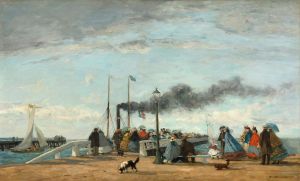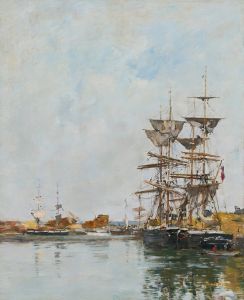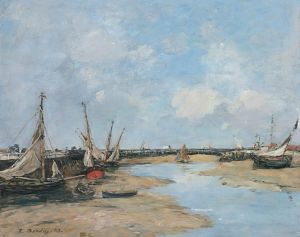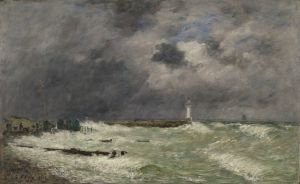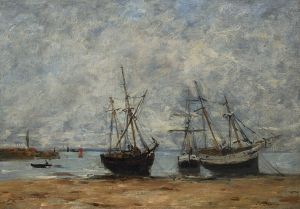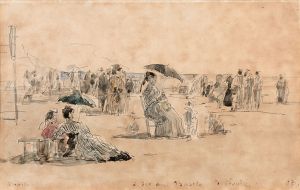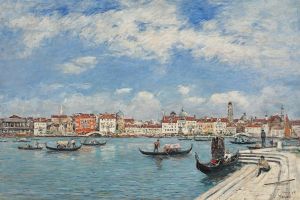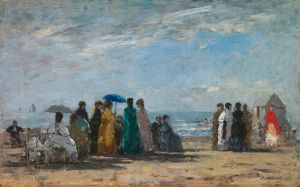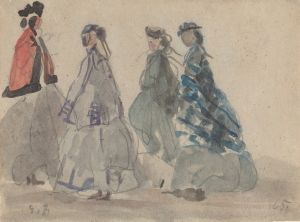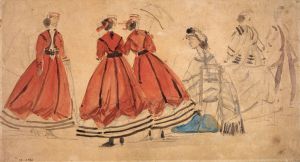
Trouville, Les jetées marée haute
A hand-painted replica of Eugène Boudin’s masterpiece Trouville, Les jetées marée haute, meticulously crafted by professional artists to capture the true essence of the original. Each piece is created with museum-quality canvas and rare mineral pigments, carefully painted by experienced artists with delicate brushstrokes and rich, layered colors to perfectly recreate the texture of the original artwork. Unlike machine-printed reproductions, this hand-painted version brings the painting to life, infused with the artist’s emotions and skill in every stroke. Whether for personal collection or home decoration, it instantly elevates the artistic atmosphere of any space.
Eugène Boudin's painting Trouville, Les jetées marée haute (translated as Trouville, The Jetties at High Tide) is a notable work by the French artist, who is widely regarded as one of the precursors of Impressionism. Boudin, born in Honfleur in 1824, was known for his depictions of coastal scenes, particularly in Normandy, where he spent much of his life. His works often captured the interplay of light, water, and sky, showcasing his fascination with the natural world and his ability to render atmospheric effects.
This particular painting depicts the jetties at Trouville-sur-Mer, a popular seaside resort in Normandy during the 19th century. Trouville was a frequent subject in Boudin's oeuvre, as the town's bustling port, sandy beaches, and changing tides provided endless inspiration for his art. In Trouville, Les jetées marée haute, Boudin portrays the jetties at high tide, emphasizing the dynamic relationship between the sea and the structures built to manage its force. The painting reflects Boudin's characteristic style, with loose brushstrokes and a focus on capturing the transient effects of light and weather.
Boudin's work is often associated with the development of plein air painting, a technique that involves painting outdoors to directly observe and depict the natural environment. This approach was revolutionary at the time and influenced many younger artists, including Claude Monet, who later became a central figure in the Impressionist movement. Boudin's dedication to painting en plein air allowed him to capture the fleeting qualities of the atmosphere, as seen in the nuanced depiction of the sky and water in Trouville, Les jetées marée haute.
The painting is an example of Boudin's ability to balance detail and spontaneity. The composition likely includes figures and boats, elements commonly found in his works, which add a sense of scale and human activity to the scene. However, the primary focus remains on the natural elements, particularly the sky, which often dominates Boudin's canvases. His skill in rendering the subtle gradations of light and color in the sky and water earned him the admiration of his contemporaries and solidified his reputation as a master of marine and coastal landscapes.
Today, Boudin's works, including Trouville, Les jetées marée haute, are celebrated for their role in the evolution of modern art. They are housed in various public and private collections around the world, with many of his paintings displayed in museums dedicated to 19th-century French art.







